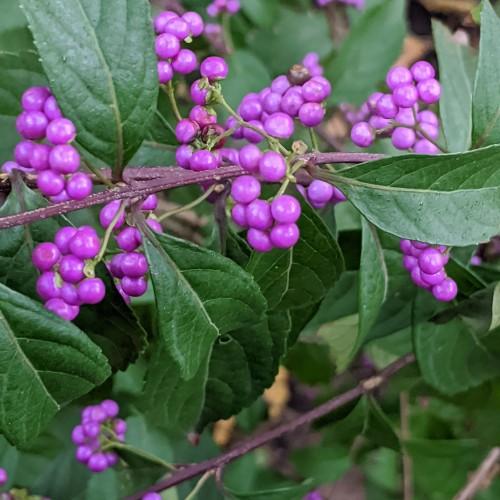
beautyberry
Callicarpa japonica 'Heavy Berry'
Cycle:
Perennial
Watering:
Average
Hardiness Zone:
5 - 8
Flowers:
Flowers
Sun:
Full sun,part shade
Fruits:
Fruits Ready In Fall
Edible:
Yes
Leaf:
Yes
Growth Rate:
Low
Maintenance:
Low
Drought Tolerant:
Yes
Salt Tolerant:
Yes
Care Level:
Medium
watering
Beautyberry (Callicarpa japonica 'Heavy Berry') is an easy to maintain plant species that grows best in average to moist, well drained soil. When watering beautyberry, thoroughly moisten the soil until water runs through the drainage holes of the pot, and allow the soil to dry out slightly between waterings. As a fast-growing plant, beautyberry will need to be watered more often in the spring and summer months. In the fall and winter months, it will need to be watered less frequently. Overwatering should be avoided as the plant will suffer from root rot if left standing in wet soil.
sunlight
Beautyberry (Callicarpa japonica 'Heavy Berry') prefers full sun for best growth and flowering; however, it can tolerate partial sun (4+ hours). Morning sun is best if it is partly shaded in the afternoon. If grown in too much shade, the plant may become leggy and won't produce many flowers or fruit. It's best to plant beautyberry in a location where it gets at least 6 hours of direct sunlight each day.
pruning
Beautyberry (Callicarpa japonica 'Heavy Berry') can be pruned anytime after it is established in the ground. Pruning should be minimal, however, as this species is naturally quite compact and developing an undesirably overgrown form. Excessive pruning can cause it to become overly leggy and sparse. To maintain its desired size and shape, trim off any dead or damaged branches in January or February. To encourage more abundant fruit production, cut back a third of the current season's growth during that time. Additionally, remove any suckers growing at the base of the plant.
